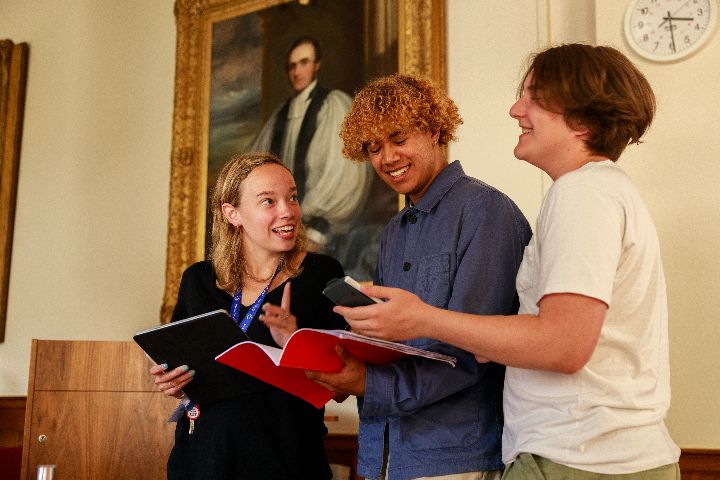100% Scholarship Winner, Alexander Sean M
Discuss the role of strategic management in the international expansion of a business.
A comparative analysis of Starbucks in China vs Australia
International expansion can make or break a business. Mega-trends like globalisation, facilitated by advancements in technology and transportation, encouraged more than 10% of businesses to internationally expand last year.1 This decision is underpinned by various opportunities, including access to a larger customer base and cheaper production. As such, it has become a critical component of strategic management – defined as an overarching strategy which uniquely positions a firm, recognises trade-offs, and aligns company activities to sustain a competitive advantage.2 This essay conducts a comparative analysis of Starbucks’ expansion into Australia and China, arguing that the most critical role of strategic management in international expansion is understanding local consumer idiosyncrasies; Starbucks did this successfully in China, but failed to do so in Australia.
Starbucks’ expansion into China was successful. This is because their strategic management adopted a polycentric approach; where a company allows its international subsidiaries to operate independently, with management considering the unique characteristics of local customers. For example, when Starbucks entered the Chinese market in 1999, it sold local teas, gaining consumer trust before selling its trademark coffee. Therefore, Starbucks was able to overcome the fact that Chinese tastes, trends and social norms were substantially different to those in America, adapting their product to local preferences for sweet tea and cold coffee. The firm also differentiated itself from competitors by opening cafes in business centres and extravagant shopping malls, charging premium prices for what local customers perceived to be a luxury brand.3 Offering the Chinese consumer a status symbol was the driving force underpinning Starbucks’ success, recognising the novelty factor associated with YED elastic customers in emerging markets. Consequently, this resulted in Starbucks leading the market for ground coffee with their market share peaking at 36.4% in 2020; today, Starbucks has 7,306 branches in China.4 This is testament to a successful polycentric approach, highlighting the importance of understanding and exploiting consumer idiosyncrasies when expanding internationally.
In contrast, Starbucks’ expansion into Australia was a failure. This is because their strategic management was built upon an ethnocentric approach; the application of management practices, cultural values, and business strategies from the home country under the assumption that these are universally optimal. Starbucks entered the Australian market in 2000, just one year later than China. It did not conduct adequate research on the idiosyncrasies of the Australian consumer, adopting the same strategy as in America. Tastes differed, with Australians disliking sweet and cold coffee, whilst the novelty factor did not exist. This quick, premium, grab-and-go-oriented coffee did not match the Australian view that cafes are a working-class social hub, stemming from Italian migrant coffee culture.5 This strategic management failure resulted in challenges for Starbucks, prompting a major pullout of two-thirds of Starbucks’ locations in 2008 with only around 80 cafes remaining open today.6
In conclusion, a comparison of Starbucks’ different approaches to entering the Australian and Chinese markets demonstrates the importance of local consumer idiosyncrasies when expanding internationally. Understanding, adapting to, and exploiting local consumer behaviours, tastes and preferences is key to strategic management. Polycentrism is critical, even in markets that appear similar and especially in those that are different. Starbucks thrived in China by tailoring its approach to the local market, while its failure to do so in Australia underscores how critical it is to embrace idiosyncrasies.
Footnotes:
1HSBC, ‘More UK firms are looking to go global for growth’ (2023).
2M. Porter, ‘What Is Strategy?’, Harvard Business Review (1996).
3CNBC, ‘How Starbucks Was Able To Win Over China’ (2023).
Ready to take your learning further?
Join Succeed, our free platform for ambitious students aged 13-18 to get future-ready. Access expert-led masterclasses, interactive
goal-setting tools, and exclusive content.
4Starbucks, ‘SEC 10-K Filing’ (2023).
5CNBC, ‘Why Starbucks Failed in Australia’ (2018).
6World Coffee Portal, ‘Starbucks sees fortunes improve in challenging Australian market’ (2024).
Bibliography
Eagly, A., and Carli, L., ‘The Female Leadership Advantage: An Evaluation of the Evidence’, The Leadership Quarterly 14(2003):807-834.
Eagly A., Johannesen-Schmidt M. and van Engen M., ‘Transformational, Transactional, and Laissez-Faire Leadership Styles: A Meta-Analysis Comparing Women and Men’, Psychological Bulletin 95(2003):569-591. [https://pubmed.ncbi.nlm.nih.gov/12848221/ last accessed: 21 August 2023]
‘Lean on Me’, McKinsey & Company, 14 January 2022. [https://www.mckinsey.com/featured-insights/sustainable-inclusive-growth/chartof-the-day/lean-on-me last accessed: 21 August 2023]
Yoder J, ‘Making Leadership Work More Effectively for Women’, Journal of Social Issues 57(2001):815-828. [https://onlinelibrary.wiley.com/doi/abs/10.1111/0022-4537.00243 last accessed: 21 August 2023]
Zenger J and Folkman J, ‘Are Women Better Leaders than Men?’ Harvard Business Review, 23 July 2014 [https://hbr.org/2012/03/a-study-in-leadership-women-do> last accessed: 21 August 2023]
CNBC, ‘Why Starbucks Failed in Australia’, Report via YouTube, 26th July 2018.
CNBC, ‘How Starbucks Was Able To Win Over China’, Report via YouTube, 7th January 2023.
Euromonitor, CIC & CITIC Securities, ‘Freshly ground coffee market distribution in China in 2020, by brand’, March
2022. Accessed on 2nd September 2024.
HSBC, ‘More UK firms are looking to go global for growth’, 6th November 2023. Accessed on 2nd September 2024.
Porter, Michael., ‘What Is Strategy? For starters, it’s not the same as operational effectiveness’, Harvard Business Review, 1996. Accessed on 30th August 2024.
Saini, Mohit., ‘Starbucks Australia Failure: Why it Happened’, Better Marketing, 20.10.2019. Accessed on 2nd September 2024.
Starbucks, SEC 10-K Filing of Annual Reports, November 2023. Accessed on 2nd September 2024.
Starbucks, ‘Our First Store in China’. Accessed on 2nd September 2024.
World Coffee Portal, ‘Starbucks sees fortunes improve in challenging Australian market’ 17.07.2024. Accessed on 2nd September 2024.
Why Apply To The Immerse Education Essay Competition?
Are you a highly motivated student aged 13-18? Have you ever wanted to experience studying in one of the world’s top universities?
The Immerse Education essay competition allows you the chance to submit an essay for the chance to be awarded a scholarship to attend one of our award-winning academic or career-based summer schools.
How To Apply To The Immerse Education Essay Competition
The Immerse Education annual essay competition is a once-in-a-lifetime opportunity to win a scholarship to our summer programmes.
If you’re aged 13-18 and interested in applying to the Immerse Education essay competition, please visit our essay competition page for more details.

















